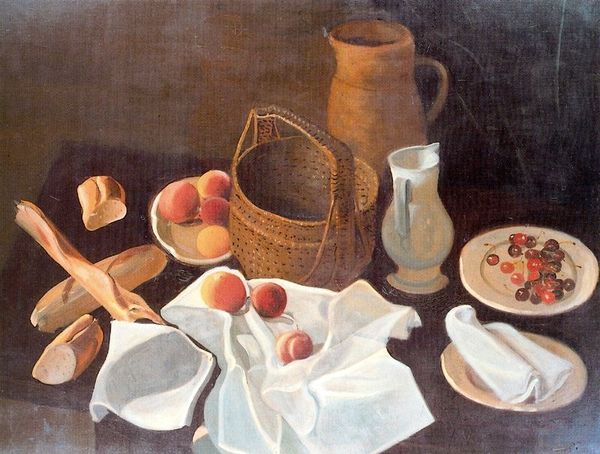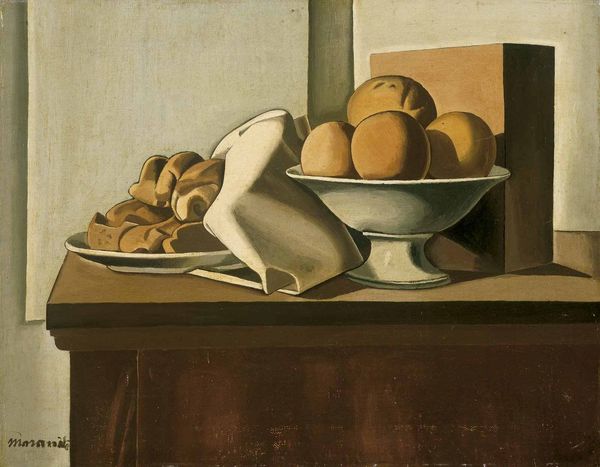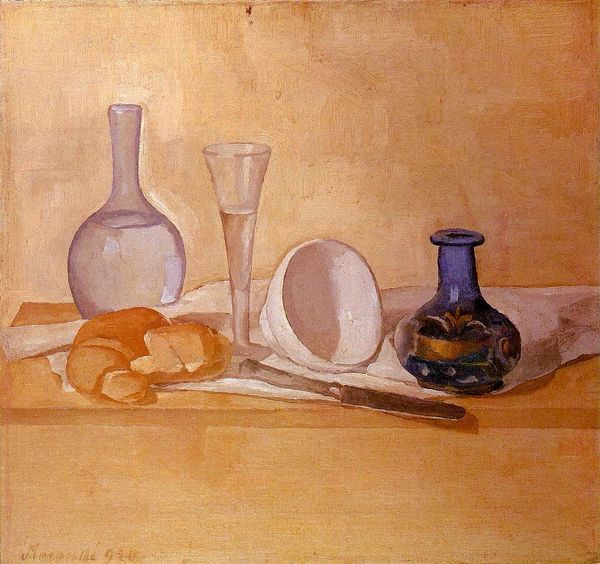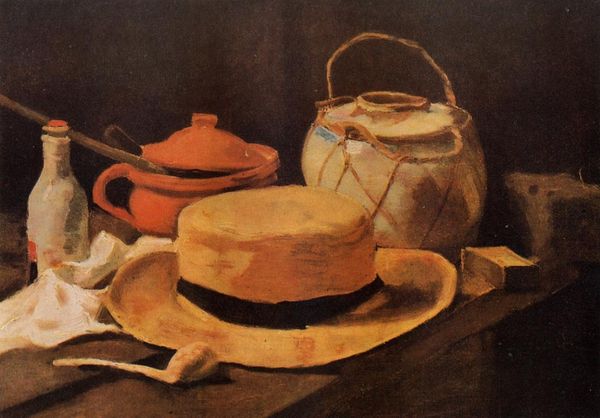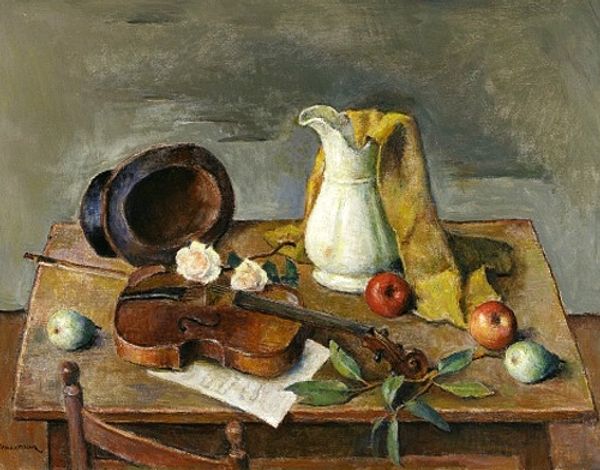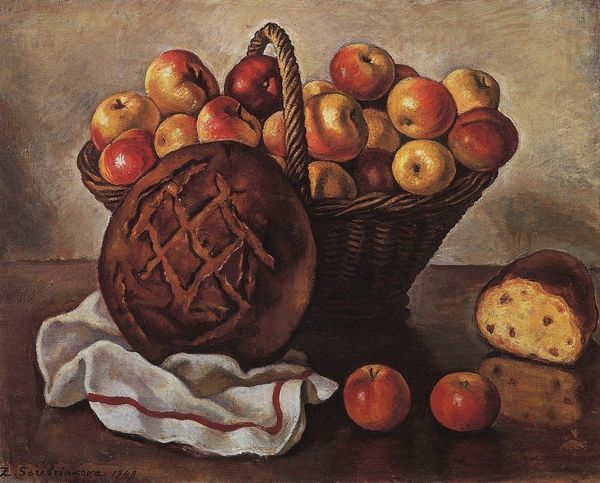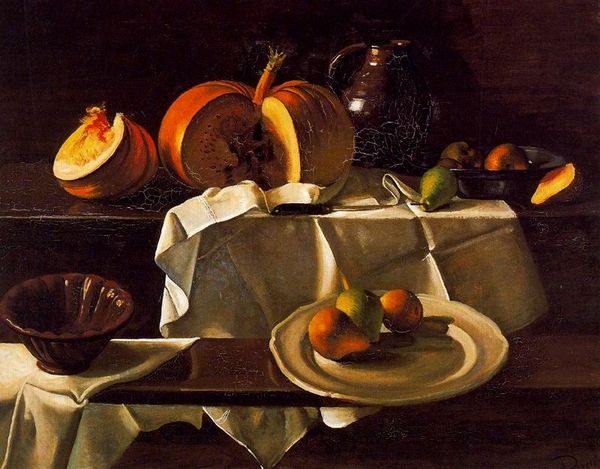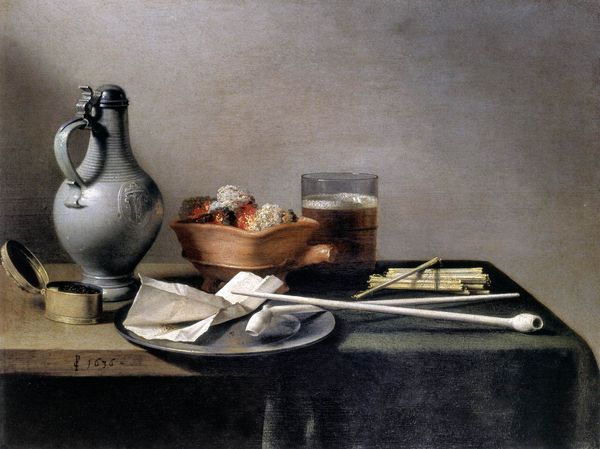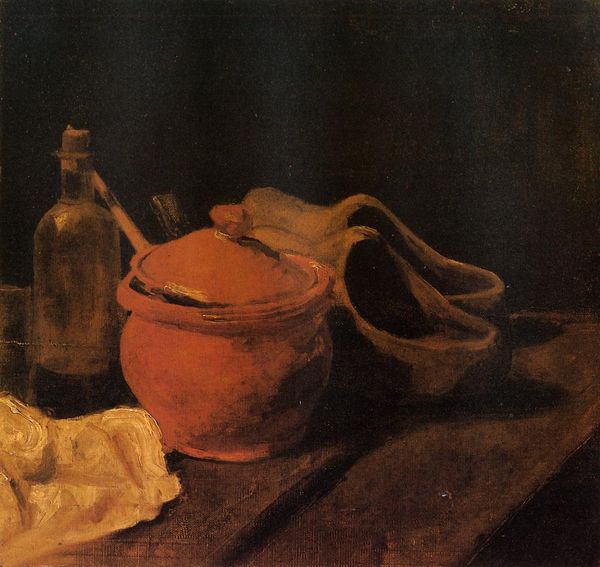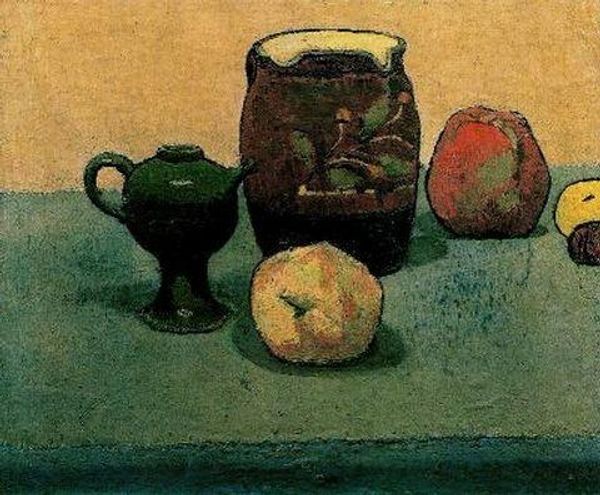
painting, oil-paint, photography
#
portrait
#
still-life
#
cubism
#
painting
#
oil-paint
#
charcoal drawing
#
photography
#
oil painting
#
geometric
Dimensions: 101 x 128 cm
Copyright: Public domain US
Curator: This still life by Pablo Picasso, titled "Still life with jug and bread," was completed in 1921. It's executed with oil paint, and exemplifies his cubist style. What’s your initial reaction? Editor: A quiet sort of humbleness, actually. It feels stripped down. I mean, it's almost monochrome with these muted browns and creams, but even with that restrained palette, the fractured perspectives still scream Picasso. There's this almost reverential depiction of very ordinary, everyday objects... What's the context for this piece? Curator: That's insightful. During this period, Picasso was deeply invested in exploring different styles. After the more radical phases of analytical and synthetic cubism, he returned to a more classical approach to form, while retaining the multifaceted perspective. Think about it— bread and jugs are symbols of sustenance, maybe of a more stable, domestic life following the turmoil of war. Editor: Absolutely. The return to the classic... We see it echoed across Europe in the interwar years—an impulse toward order after chaos, the weight of collective trauma manifesting as aesthetic restraint. But what I find striking is the tension: these 'safe' objects are rendered through a deconstructed lens. It’s not a peaceful still life. Curator: I agree; there's tension here. He’s playing with planes and angles in a way that disrupts the traditional still life, almost forcing us to reconsider how we see these familiar objects. I find myself drawn to the jug—its solidity despite being pieced together visually from different vantage points. Editor: And there is something quietly subversive in elevating these ‘minor’ subjects – bread, a jug – to the level of high art, a kind of quiet resistance against the grand narratives that dominated artistic discourse, isn’t it? It challenges the elitism inherent in artistic traditions and opens up spaces for considering the profound beauty that lies in the everyday. It is, like the man said, "Art washes away from the soul the dust of everyday life." Curator: You know, thinking about it that way reframes how I see his later work. What appears traditional, or even conventional, is constantly under scrutiny from within. Thank you, as always, for your rich insight. Editor: Always a pleasure to unpack the layers. There's so much more to glean from just the surface of this still life; now, when I look, I perceive Picasso is using the fragments to show the possibilities of existence as not just broken but in fact diverse and complex.
Comments
No comments
Be the first to comment and join the conversation on the ultimate creative platform.
